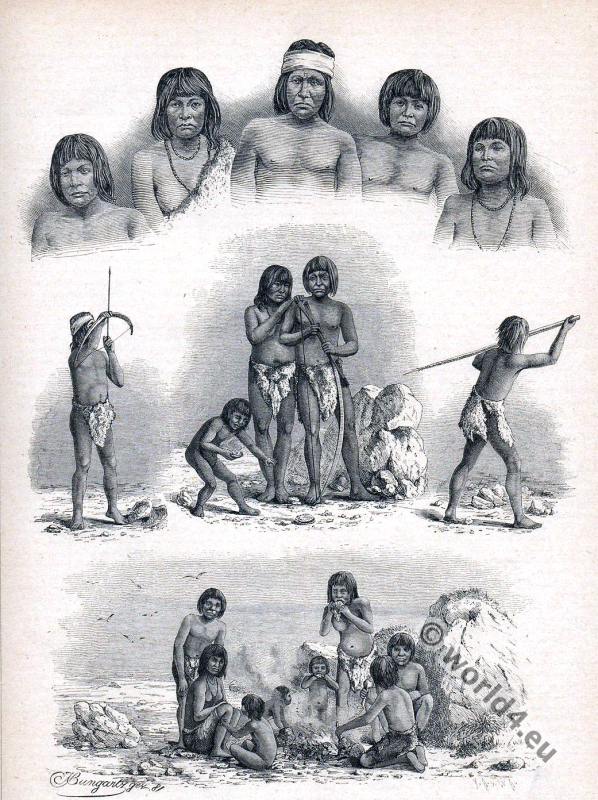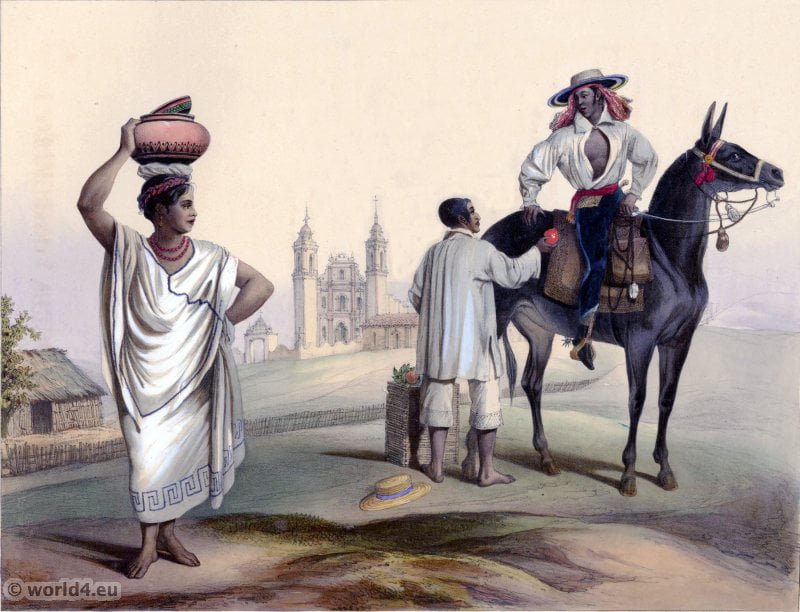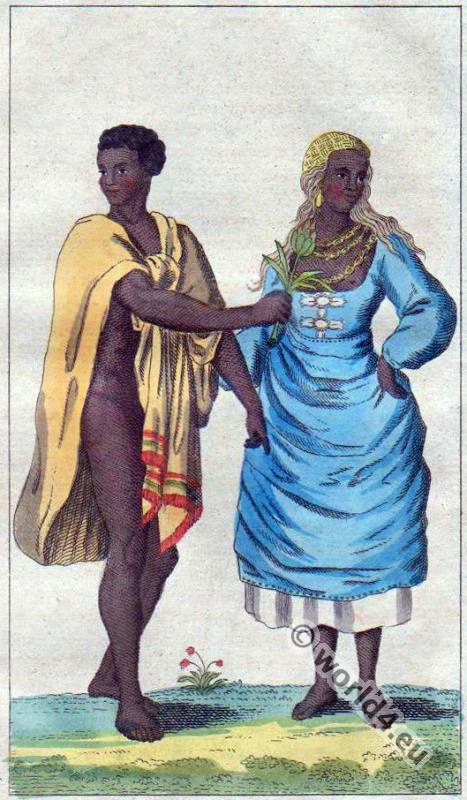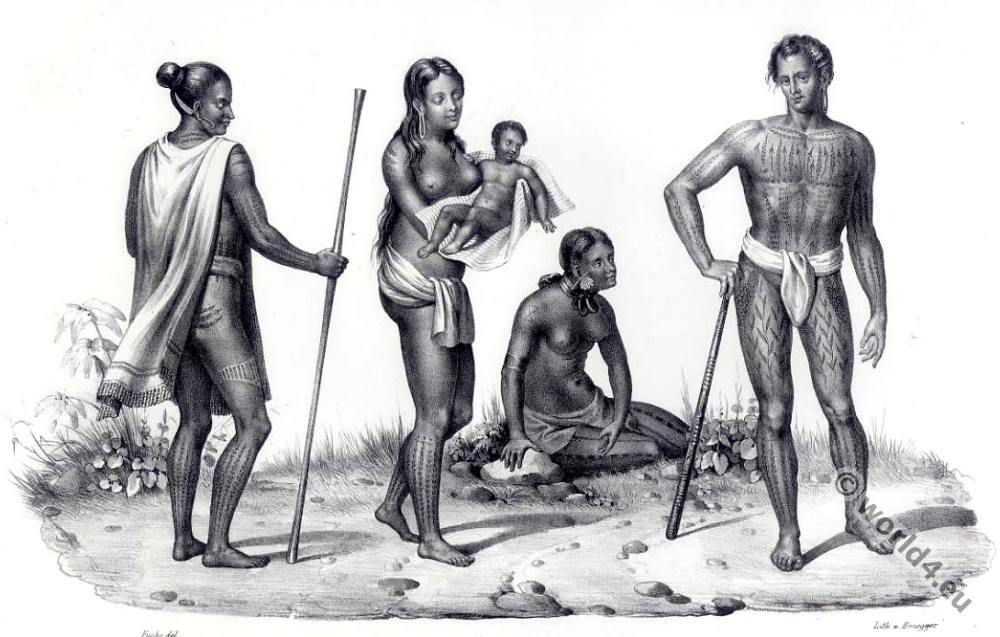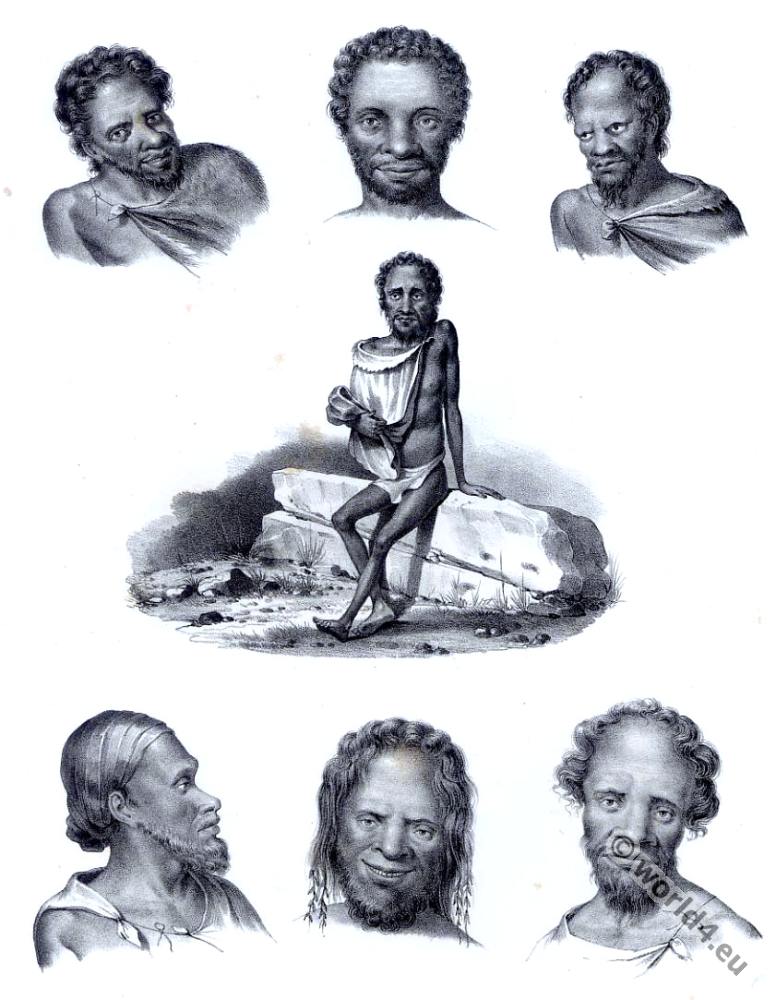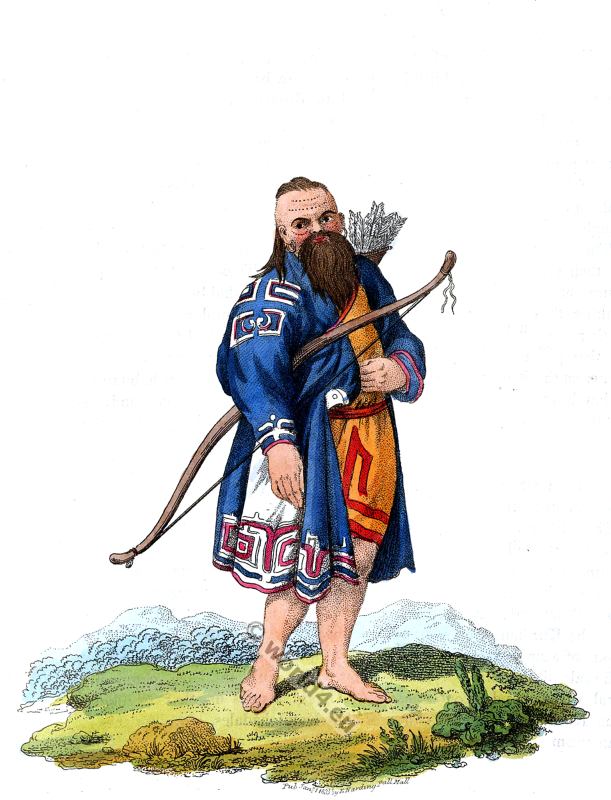Tierra del Fuego in South America.
Different types of aboriginal.
At the time of the arrival of the first Europeans in Tierra del Fuego, four groups of indigenous peoples can be distinguished: the land nomads of the Selk’nam (Onas) and the Haush (or: Manek’enk), who settled inland and in the southeast of the main island respectively, and the sea nomads of the Alakaluf and the Yámana (Yaghan), who lived on the western and southern coasts. Due to their way of life as hunter-gatherers, the total number of the individual population groups can be estimated at 12,000 for the 17th century.
At the beginning of the 20th century were the original inhabitants of Tierra del Fuego, the Yamana or Yaghan, Haush, Selk’nam and Kawesqar people, almost completely exterminated by white settlers during the colonization. In particular, the guided Conquista del Desierto (Desert conquest) of the later Argentine President Julio Argentino Roca, led to many deaths among the Indian population.
Thus has been exposed by a reward of one pound sterling per head price for killing of an Indian. The London Museum of Anthropology paid even up to eight pounds sterling for the head of a fire lander. This led to downright hit squads chasing the indigenous peoples.
Not without influence on these developments and their justification was a description of the indigenous peoples by Charles Darwin. Darwin described the Fuegian as the “contemptible and miserable creatures I have ever encountered.” Next: “As soon as you can get through to the belief that they are our fellow creatures and inhabitants of the same world… .”
The German clergyman Martin Gusinde SVD made a great contribution to the study of the dying Indian cultures. He explored the culture of the Tierra del Fuego Indians on journeys from 1918. His descriptions of the cultural wealth of the Tierra del Fuego Indians refuted the clichés common in Chile and Argentina of the supposedly “uncivilised savages” in Tierra del Fuego
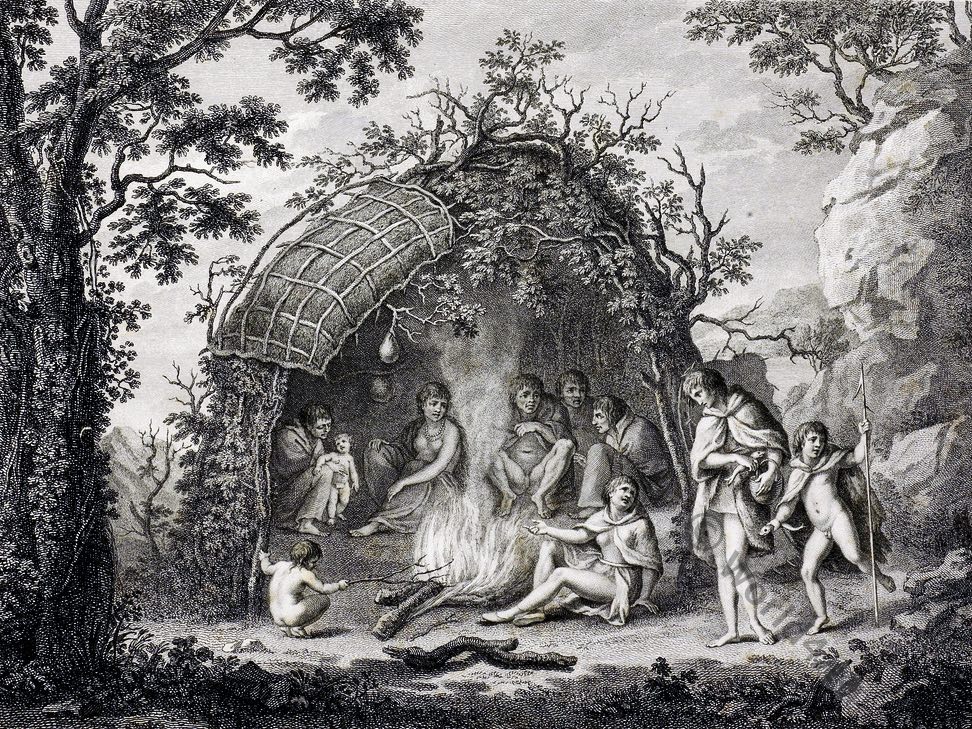
Continuing
Discover more from World4 Costume Culture History
Subscribe to get the latest posts sent to your email.

